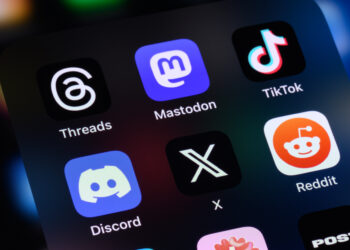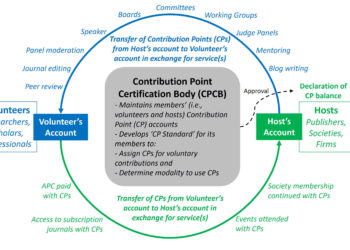
The big trend of the last decade has been the quiet, unremitting erosion of mass media.
Television has been a major form of mass media since the 1950s, but it is quickly losing its ability to exert a mass effect. A recent study from Accenture notes these trends both in viewing habits and in hardware purchasing:
. . . the percentage of consumers watching broadcast or cable TV in a typical week on televisions fell from 71 percent in 2009 to 48 percent in 2011. . . . the percentage of consumers who intend to buy a TV set during the next 12 months declined from 35 percent in 2010 to 32 percent in 2011.
In 2009, approximately 39.3 million televisions were sold in the US. A 3% drop in consumption means >1 million fewer televisions were sold. And while the 23% decrease in watching television is startling, it only tells half the story, I believe — that is, television watching is no longer “watching.” Instead, it’s more “filtering” and “backdropping.”
There were two requirements for mass media, as aptly captured by Clay Shirky:
. . . mass media required two things from its consumers – size and silence.
The Accenture data point to the mass aspect decreasing in size, but it doesn’t speak to the silence that’s ending — in a number of ways, the sound of silence is being replaced by the sound of DVRs whirring with scheduled and selective recordings, the sound of iPads and laptops being pecked at and swiped by people in front of televisions, and the sound of viewers watching YouTube and other media on other screens.
These changes are essentially making television schedules as meaningful to TV viewers as tables of contents are to journal readers these days — glanced at when needed, but hardly doing the work a search engine can do instead.
Consumers are also no longer silent shoppers finding it difficult to do anything but accept the prices local retailers present them, as I briefly discussed last week. They can read reviews in the aisles, and compare prices in the store while shopping. Store owners can no longer be assured that putting a store in a certain population center will capture the market as they expect, nor can they be assured that consumers will have made a shopping choice by stepping into their stores. In fact, a growing percentage of consumers treat the store they’re in as one of many shopping options at that particular moment of retail engagement.
The end of mass media mentalities is driving to distraction some people possessing mass media mentalities. Recently, Kurt Andersen joined a growing chorus of worriers claiming that styles haven’t changed in decades, perhaps suggesting a societal inertia. But what’s more likely happening is that styles are diverging, emerging, and remixing, but in smaller pools. In a mass media environment, New York or Los Angeles could impose itself. Now, it’s just as likely that Andersen and others are experiencing their own fashion echo chambers, the filter bubble described by Eli Pariser. It’s hard to see that things in the neighboring bubble have changed from within your own reflective cocoon.
We’re seeing similar responses to the end of mass media in our midst, with the emergence of new attitudes about publishing in the age of abundance. These are enabled by the underlying shift in who controls the media. Again, turning to Shirky:
The future presented by the internet is the mass amateurization of publishing and a switch from ‘Why publish this?’ to ‘Why not?’
One question we’re facing now is “Publish, then filter, or filter, then publish?” We’re facing it because publishing has become viable for new people and new confederations. Email has enabled asynchronous communication; online manuscript systems have allowed for new production processes; electronic mark-up in Word has allowed for asynchronous, recursive editing; and automated production systems have lowered costs and the need for layers of expertise.
But while fashion and television can turn amateur, fragment, and echo recursively with relatively little harm, science doesn’t benefit from these trends becoming the major trends. Science benefits as much or more from their opposites — professionalization, synthesis, and novelty. By aping the media practices around us, we may be inadvertently putting our thumbs on the scales — more channels, but nothing on; styles that change only in isolation; and fields full of incestuous ideas. Whether this helps scientists isn’t clear.
Perhaps the genie can’t be put back into the bottle, but as long as our wishes remain the same, the job then is to ask this new genie for them carefully. If we don’t, our wishes may backfire — like the 60-year-old husband with a 60-year-old wife who wished for a wife 30 years younger, only to find himself turned into a 90-year-old.
Be careful when messing with genies.
Discussion
11 Thoughts on "The End of Mass Media Mentalities and the Sciences"
Given that scholarly publishing is sort of the opposite of mass media, it is hard to see a negative trend in these numbers. The proliferation of devices is certainly a challenge, but the idea that science somehow suffers seems like a stretch.
Given more time, this would have been a longer, richer post. I think there are elements of scholarly publishing working to preserve a mass media model — impact factors, circulation numbers, ad exposures, and acceptance rates. These are based on a mass media mindset — quantity over quality. If we were truly non-mass media, you’d want to publish first and foremost in the journal that reached only those people you knew were doing research in the same field and who could really make something of the information. And that, in fact, is what happens, even if you publish in a journal with a bigger “mass media” profile — i.e., only those people who care about what you’re talking about read it. One of the great changes has been the emergence of Web stats, which show how little of any issue gets read by the total putative print audience. Similar surveys done in print reflect reader selectivity, which is high. But we continue to send thousands of unread articles out to our audiences, because it’s still a mass media model.
Now, as for potential harm, there is the real risk, I think, of the filter bubble — you only see what you’ve already indicated an interest in, as an algorithm interprets it. The mass media model put a gentle, human algorithm on these filters, so they were idiosyncratic not only at the moment but over time. Human thought is more changeable than an algorithm, so an editor’s whim might give you very different selections in the next issue. That’s mass media. But the non-mass media world with targeted search results based on prior search history, geographic location, and so forth, these are very different animals, and we don’t know quite what to make of them yet. If you Google from Germany, you get very different results than if you Google from the States, for instance — different lists, different language. What is the German’s experience of science, compared to yours? When they enter a term to find information, is there a common results list? Science should be about finding the truth, but if that truth becomes customized, what is it then? Scientific relativism?
Your two paragraphs seem somewhat contradictory. In the first you are concerned about publishing things which it turns out no one is interested in (or not yet anyway). In the second you are concerned about people only seeing things there are already interested in. If you solve the first problem by filtering on known interests, are you not feeding the second problem?
Right, that’s where we’ve ended up. There are downsides to both, so it’s not so much a contradiction as a history, and now we have to learn to do the best with what our new technologies and capabilities have given us.
For a rather different view of TV and its future, see this blog from Mark Cuban, who always has interesting things to say: http://blogmaverick.com/2012/01/14/the-tv-business-keeps-getting-stronger/. I’ll leave it to you to figure out how this applies to science….
Always interesting to contrast what people do versus what they say they do. The Accenture study is based on a survey. Contrast that with Turner Networks recent report (which as far as I can tell is based on actual usage data) and you get a different story:
http://paidcontent.org/article/419-study-old-school-tv-viewing-is-still-growing
According to the report, the average number of hours a typical viewer spent watching TV in 2011 was 34.2 (I know, who are these people, and where do they get the time?). The figure was 34.0 hours in 2010 and 32.3 hours in 2006.
But your overall point is a good one. What works for one culture may not work for another. In particular, what works for a culture based on taste and preference, may not be appropriate for a culture based on fact. There’s no “like” or “+1” for science, there’s either right or wrong. It’s part of what has doomed so many “Facebook for Scientists” efforts to date.
In fact, preference plays a major role in science, especially in the diffusion of new ideas, where there is a constant struggle for attention and acceptance. (The right-wrong truth value may take a long time to reveal itself, including centuries.) The failure of Facebook models is probably due to deeper reasons.
The genie is definitely out and now that more and more people know they can publish without any filter, they will. Give people freedom and they will take it.
The opportunity then lies in filtering what comes at us. That means educating people on how to listen to the ever growing digital noise, so they end up with as much relevant information as needed. We clearly see a lot of progress in that area already via apps that help you filter information (such as RSS readers and iPAD apps life Flipboard and Zite), Google alerts and in my opinion the most powerful, the return to word of mouth (albeit more online then offline) and “social friends’ recommendations”.
A bit digressing, but one other very important point is the acceptance that a lot of those connections are very short lived and not always consciously two-way. I for one have been reading this blog for a few months now and might be gone in a few (or not) and without this comment you would have never been aware of my existence.



